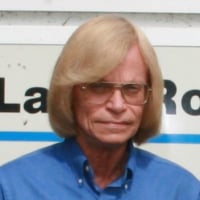Welcome! Here are the website rules, as well as some tips for using this forum.
Need to contact us? Visit https://heatinghelp.com/contact-us/.
Click here to Find a Contractor in your area.
If our community has helped you, please consider making a contribution to support this website. Thanks!
Interpreting Furnace Combustion Readings
Options
Rizz861
Member Posts: 64
in Gas Heating
I can’t seem to find any information on determining if you have a cracked primary heat exchanger or plugged secondary heat exchanger with a combustion test. I know visually checks will confirm this, but I thought I remember hearing if the excess air was too high that would indicated a crack. I thought I remember you could tell you had a plugged secondary via a combustion test as well. My company’s policy is really a “How old is it? If looks bad replace it” MO which isn’t very good in my opinion. I’d like to think your O2 levels would be high, CO2 levels would be low, and excess air would be through the roof with a cracked heat exchanger but what would the CO look like? Would it be small because it’s being diluted and passed into the ductwork and not the vent via the blower? And what would a blocked secondary reading look like? And what is an ideal excess air reading? I know 02 is usually 4-7 or so and CO2 is usually 7-10 or so for natural gas or more importantly what the manufacturer specs, but I can’t seem to get the ideal excess air range. Thanks in advance guys!!!
0
Comments
-
Oil or gas? Sounds like gas if you mention secondary heat exchanger.
You're company sounds like a real hoot.
You can use your analyzer and look at the numbers with the blower off and see if they change with the blower on.
You can also check your over fire draft with blower off and blower on, to see if there is any change.
I don't think there's an ideal excess air target, just that it changes from blower off to blower on. Sometimes these cracks open up bigger when things heat up.
I seriously doubt once the blower comes on that CO is passed into the ductwork, despite what the large 'scare them with CO to sell them stuff they don't need' companies claim. Some might migrate thru a large hole before the blower comes on.
The blower is much stronger than any burner motor or inducer motor.There was an error rendering this rich post.
2 -
Steve is correct. The protocol is if the O2 changes .5% up or down when the blower is turned on there may be a crack. However even with cracks that might not change.
Leaks between the blower compartment and burner or leaky return duct can cause the same readings. No CO has to be produced to condemn a cracked heat exchanger.
A plugged secondary is going to have low O2 and it will be rising along with the CO.
Excess air and O2 are the same thing. Just go by O2 6%-9%. Some do better and some do worse. Missing a crack is not as dangerous as missing CO.4 -
I don't think a combustion test alone will tell you what your looking for.0
-
I took some readings on a vacant property that have me confused, hence the reason for the thread. O2 was 11.3%, CO2 was 5.42% CO 3ppm and undiluted CO 8 ppm. Excess air 117.7%. O2 seems very high, CO2 low, and the low amount of CO is something I haven’t seen before (still newer to this). To me, these numbers represent a severe deviation from the norm compared to boilers in use to running these tests on. Any pointers are greatly appreciated. Thanks0
-
In my experience when I encounter a plugged secondary heat exchanger CO levels are higher than normal after ignition and tend to climb as the equipment operates.
Age of equipment isn't everything. An older furnace that was sized and installed properly on good ductwork will usually outlast a newer oversized furnace on undersized ductwork.1 -
Need a flue temperature and water temperature. Numbers indicate underfired if taken in the proper location. Induced draft or natural draft? What kind of a drafthood?0
-
@captainco It was induced draft high efficiency furnace. I don’t have the other numbers you requested0
Categories
- All Categories
- 87.3K THE MAIN WALL
- 3.2K A-C, Heat Pumps & Refrigeration
- 61 Biomass
- 429 Carbon Monoxide Awareness
- 120 Chimneys & Flues
- 2.1K Domestic Hot Water
- 5.8K Gas Heating
- 114 Geothermal
- 166 Indoor-Air Quality
- 3.7K Oil Heating
- 77 Pipe Deterioration
- 1K Plumbing
- 6.5K Radiant Heating
- 395 Solar
- 15.7K Strictly Steam
- 3.4K Thermostats and Controls
- 56 Water Quality
- 51 Industry Classes
- 50 Job Opportunities
- 18 Recall Announcements


